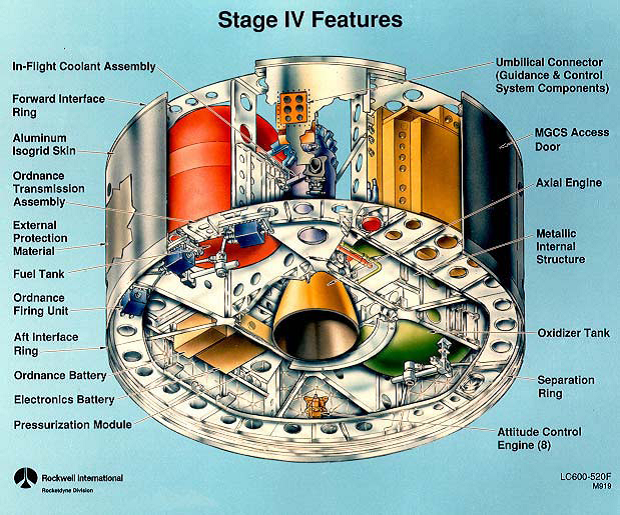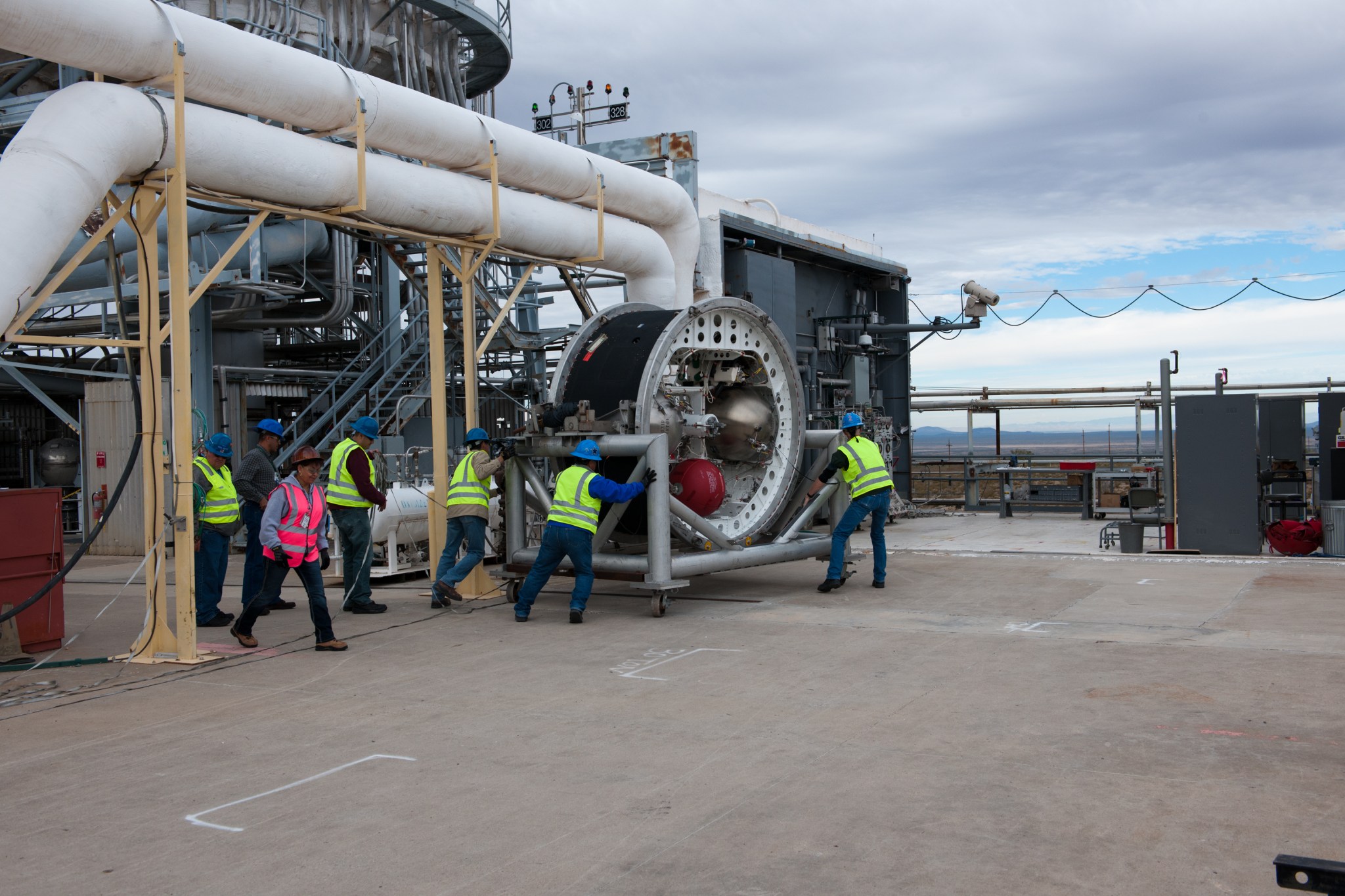NASA Johnson Space Center (JSC) White Sands Test Facility (WSTF) contracted with the United States Air Force (USAF) to safe Peacekeeper Post Boost Propulsion System (PBPS) stages over the next four years by de-tanking hypergolic propellants, venting helium tanks, and expending the ordnance so the stage can be destroyed by the Air Force and reusable hardware and propellants could be harvested. WSTF was selected by Hill Air Force Base (AFB) to safe the PBPS stages because the facility was familiar with the stage from aging and surveillance hot-fire testing during Peacekeeper’s deployment in the early 2000s.
WSTF’s unique background and expertise in hypergol handling and safety, and the site’s ability to hot-fire hypergol rocket systems using the propellants, makes WSTF the logical choice for the safing project. WSTF also provided the decontamination and deservicing operations for space shuttle orbital maneuvering system (OMS) pods after completion of the Space Shuttle Program in 2011. With existing storage and handling facilities for hypergolic propellants, along with the necessary environmental permits in place for hazardous test operations, the remote location and controlled access of WSTF make it highly suitable for this type of work.
Peacekeeper History
In 1986, the LGM-118A Peacekeeper was the newest Intercontinental Ballistic Missile (ICBM) deployed by the USAF. At the end of the Cold War, the United States revised its strategic policy and agreed to eliminate the multiple re-entry vehicle Peacekeeper ICBMs by 2003 as part of the Strategic Arms Reduction Treaty II (START II). The missiles were deactivated, disassembled, and shipped to Hill AFB in Utah. With the removal of the Peacekeeper from service, the Air Force Program Office at Hill AFB in Utah had to find disposal methods for the various Peacekeeper systems as the START II required. This included disposal of both solid propellant and hypergolic rocket propellant systems. As part of the treaty, the USAF was required to demilitarize the Peacekeeper PBPS.
Through a Reimbursable Space Act Agreement, twenty Stage IV PBPS units from the ICBMs were sent to WSTF from 2007-2009 to be safed and destroyed. After processing the 20 PBPS units the Air Force decided to halt the demilitarization process in 2009 to evaluate various re-use options for the remaining 44 PBPS units, including transfer to private companies and other governmental agencies for their use; however, when agreements could not be reached by the end of 2012, WSTF was asked to continue the process of demilitarization of the PBPS. The facility was reactivated and the demilitarization process began again in 2013.
PeaceKeeper Stage IV (PBPS)
The Peacekeeper ICBM was large, with four stages. The first three stages were solid propellant boosters used to achieve launch and insertion into space. Stage IV, the PBPS, had hypergolic propellants and maneuvered the missile as the re-entry vehicles were deployed in sequence. The Stage IV PBPS is ~92 in. in diameter and 42 in. high and consists of an isogrid aluminum structure, axial and attitude control propulsion systems coupled with a helium pressurization system, propellant storage assemblies, and propellant manifolds. The liquid bipropellant propulsion system uses the hypergolic propellants monomethylhydrazine (MMH) and nitrogen tetroxide (NTO). The PBPS contains eight small attitude control engines (ACE), 70-lbf each, and one axial engine (AXE), 2563 lbf. The propulsion system includes propellants, tanks, pressurant gas, pyro-activated valves, ordnance, and a thrust vector actuation system.
The PBPS unit is safed by venting the helium pressurant tank, draining all hypergol propellants, expending on-board ordnance, discharging batteries (electrical), removing and capturing Freon for recycling, and decontaminating propellant tanks. Once the propellant tanks are field decontaminated to a non-detectible level, the propellant tanks are cut in half as a final step of the process and sent to Davis-Monthan Air Force Base for destruction, along with the remaining stage IV structure, minus harvested hardware.
Benefits/Uses
With the discontinuation of space shuttle flights and the need to develop replacement craft quickly, Peacekeeper PBPS hardware and consumables provided inexpensive, proven, and readily available options to NASA. Using existing non-manned flight-qualified hardware would allow NASA to meet schedules that could not be met if hardware had to be developed and qualified before manufacturing. Obtaining the Peacekeeper hardware offers a unique opportunity for NASA to have robust, flight-qualified hardware available for future test, development, and flight programs.
Hardware from the Peacekeeper Stage IV was harvested and successfully flown in the Ares 1-X roll control system. The Ares 1-X was the first new vehicle to be built and tested under the Constellation Program. The first test flight was October 28, 2009. This unmanned cargo vehicle used existing solid rocket propellant technology based on the shuttle solid rocket boosters. The vehicle required roll control during launch to maintain stability of the vehicle. Using available qualified flight hardware from Peacekeeper saved an estimated $10M and two years in development time.
Commercial space companies are also benefitting from the reuse of Peacekeeper hardware. Solid rocket stages are being integrated into satellite launch vehicles by Orbital Sciences and launched from NASA Wallops Flight Facility in Virginia.
Reusing millions of dollars’ worth of hardware and propellants for peaceful purposes meets all requirements of the START II arms reduction treaty and provides huge savings to U.S. taxpayers and to the USAF, since there is less hardware to destroy, and the reusable hardware and propellants can be repurposed instead of destroyed, the ultimate re-use project!


























